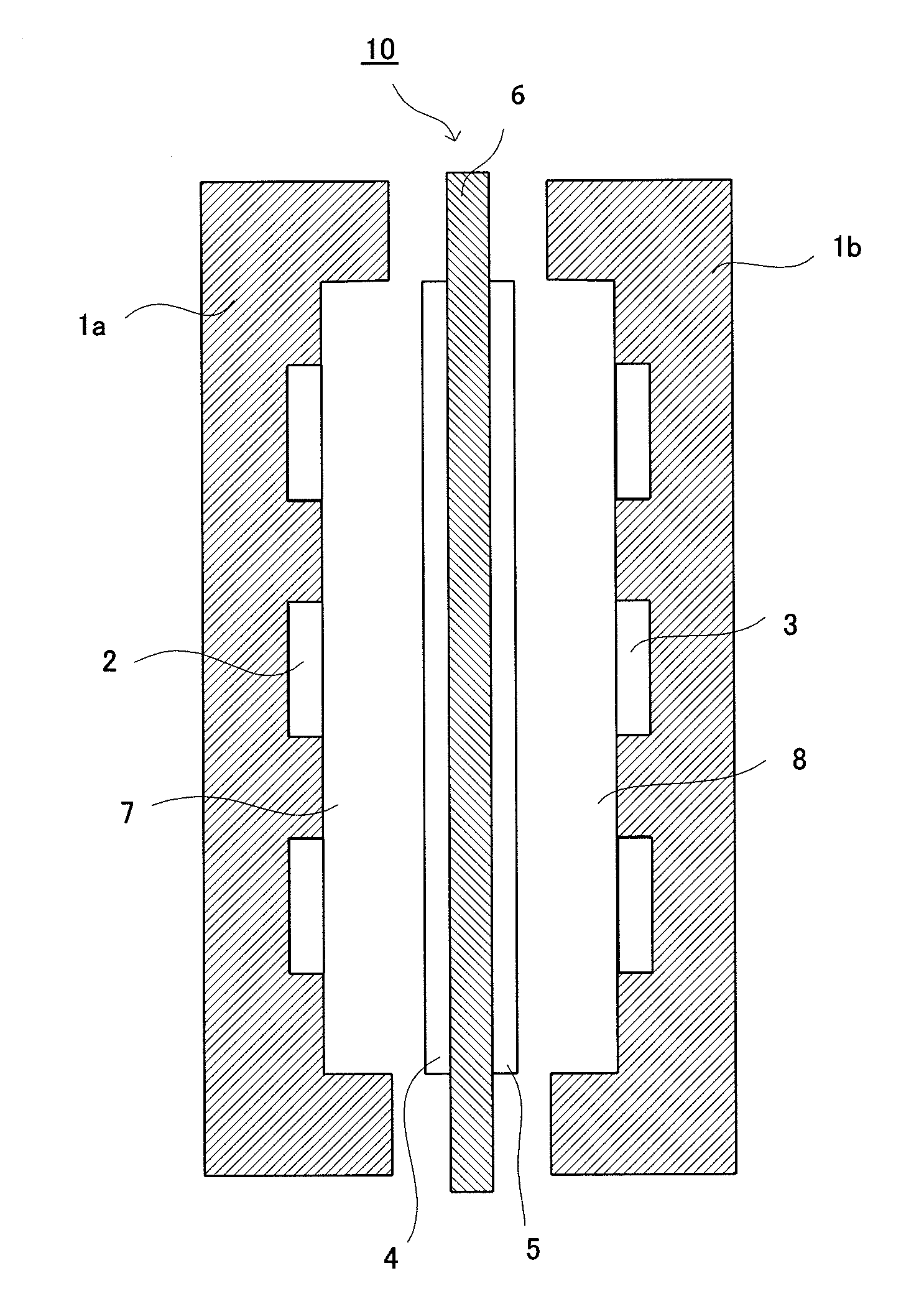Diaphragm for direct liquid fuel cell and method for producing the same
a technology of liquid fuel cell and diaphragm, which is applied in the direction of sustainable manufacturing/processing, final product manufacturing, conductors, etc., can solve the problems of limited reduction in fuel cell production cost, water make-up is needed, and high cost of perfluorocarbonsulfonic acid resin membrane, etc., to suppress alcohol crossover, reduce the resistance of the membrane, and reduce the cost of fuel cell production
- Summary
- Abstract
- Description
- Claims
- Application Information
AI Technical Summary
Benefits of technology
Problems solved by technology
Method used
Image
Examples
examples
[0075]The present invention is described more specifically below by way of Examples. However, the present invention is in no way restricted to these Examples.
[0076]Incidentally, the anion exchange capacity, water content, membrane resistance, methanol permeability, mechanical strength, membrane thickness and fuel cell output voltage, used for the property evaluation of fuel cell membrane in Examples and Comparative Examples, were measured by the following methods.
[0077]1) Anion Exchange Capacity and Water Content
[0078]An ion exchange membrane was immersed in an aqueous solution containing 0.5 mol·L−1 of NaCl, for 10 hours or more, to convert the membrane to a chloride ion type. Then, the ion exchange membrane was converted to a nitrate ion type using an aqueous solution containing 0.2 mol·L−1 of NaNO3. The liberated chloride ion was quantitatively determined using an aqueous silver nitrate solution by the use of a potentiometric titration apparatus (COMTITE-900 produced by Hiranuma ...
examples 1 to 11
[0094]Monomers, etc. were mixed in accordance with the formulations shown in Table 1, to obtain individual polymerizing compositions. 400 g of each polymerizing composition obtained was placed in a 500-ml glass container. Therein was immersed each of porous films (A to H, each 20 cm×20 cm) shown in Table 1.
[0095]Successively, the porous film was taken out from the polymerizing composition and was covered at the both sides with polyester films of 100 μm used as a peelable material. Then, thermal polymerization was conducted at 80° C. for 5 hours at a nitrogen pressure of 0.3 MPa.
[0096]The resulting membrane-shaped material was imersed in an aqueous solution containing 6 mass % of trimethylamine and 25 mass % of acetone, at room temperature for 16 hours. Then, the membrane-shaped material was immersed in a large excess of a 0.5 mol·L−1 aqueous NaOH solution to convert the counter ion from chloride ion to hydroxide ion. Thereafter, the membrane-shaped material was washed with deionized...
PUM
| Property | Measurement | Unit |
|---|---|---|
| thickness | aaaaa | aaaaa |
| thickness | aaaaa | aaaaa |
| thickness | aaaaa | aaaaa |
Abstract
Description
Claims
Application Information
 Login to View More
Login to View More - R&D
- Intellectual Property
- Life Sciences
- Materials
- Tech Scout
- Unparalleled Data Quality
- Higher Quality Content
- 60% Fewer Hallucinations
Browse by: Latest US Patents, China's latest patents, Technical Efficacy Thesaurus, Application Domain, Technology Topic, Popular Technical Reports.
© 2025 PatSnap. All rights reserved.Legal|Privacy policy|Modern Slavery Act Transparency Statement|Sitemap|About US| Contact US: help@patsnap.com


